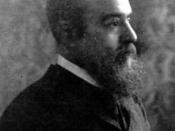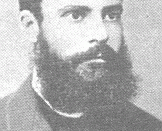Conceptual models have been frequently used to facilitate thinking about public policy. These constitutes framework within which and through which we can think and explain about public policy. Of the eight conceptual models; Institutional, Process, Group, Elite, Rational, Incremental, Public Choice and Systems, I will be talking about the Elite Model.
In general, the Elite Model can be summarized as follows:
- Public policy is viewed as the preferences and values of the governing elite. The Elites make policy.
- Public policy reflects the interests and values of the Elite and not the demands of the Masses
- The Elite views the Masses as largely passive, apathetic and uninformed
- The general pattern of policy decisions are made in a top to bottom way
- Elite consensus on fundamental norms is high (They think they know what's best and they think alike)
Elite theory originally developed from the work of two Italian sociologists; Gaetano Mosca and Vilfredo Pareto. Pareto argued that, in the course of history, different leadership qualities are required in order to adapt society to changed circumstances. Essentially, two types of person can be distinguished, 'lions' and 'foxes', the former, according to Pareto are stolid and forceful, willing to use violence. The latter are basically sly, 'wheeler-dealer' types. One or other type will rule as long as it can cope with the political and economic problems facing it; but in certain circumstances their particular qualities will be insufficient for the task in hand, and they will be deposed by the other group. Pareto describes this process as 'the circulation of elites', which rise and fall through a combination of psychological aptitudes and historical circumstances, irrespective of the economic or social structure of society. There are many flaws in Pareto's work, but the main ones must centre...


